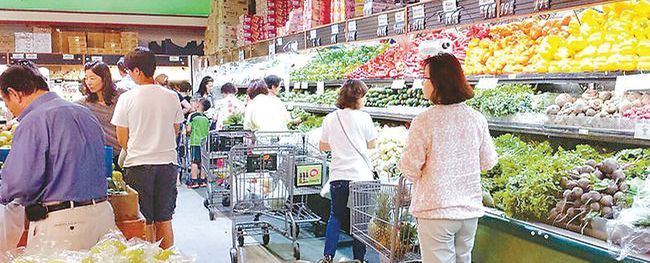
Southern California-based Korean supermarkets have decreased in number over the last seven years, according to recent findings. While five businesses operated 22 locations in 2003, but the number increased to 33 by 2011. As of September 2017, 10 businesses are now operating just 32 locations across Southern California.
H Mart led the way with nine locations, followed by Hannam Chain (six), Zion Market (six), HK Group (four), Greenland Market (two), Arirang Market (two), Plaza Market (one) and Little Tokyo Marketplace (one). If additional locations for Zion Market and H Mart were to be included, the number is set to increase to 34 by the end of this year.
Since 2011, only H Mart and Zion Market have expanded. Even then, H Mart remains as the only business that has been expanding without closing a location. Other businesses have either stalled in growth for several years or are downsizing.
“A lot of Korean markets opened in the peripheral areas of L.A. or even Orange County as many Korean-Americans moved out of the city,” said an employee at a large scale Korean market. “As the Korean-American population continue to move around the state, that obviously has affected the business of many markets.”
▲ Korean markets are closing down
Over the last decade, Korean markets have generally invested a lot of effort into expanding to Orange County and other areas around L.A.
However, several cases have shown that hasty expansion often lead to failures. In 2011, Hannam Chain closed down its Rancho Cucamonga and Garden Grove locations, while last year saw California Market on Beverly and Zion Market’
s Hawaiian Garden location close as well.
Recently, HK Market in Glendale, which for two decades has been the centerpiece of Korean-American economy in the region, finally closed down.
“The market ended up closing as Koreans in Glendale have been moving out of the city gradually,” said Packo Investments president Allen Park, who is in charge of running Galleria Market. “We initially considered relocating to La Crescenta, but the size of the market was not sufficient, while the region’s smaller businesses had to be respected as well.”
In January 2016, Assi Supermarket also seized operations due to financial struggles.
▲ Growing competition among Korean markets in L.A.
Competition in L.A. Koreatown is only becoming fiercer. There are nine Korean markets in Koreatown alone. The number will soon be 10 when Zion Market opens another location on Vermont Avenue later this year. On Western Avenue, there are five Korean markets within less than two miles of distance.
“We chose to add another location in Koreatown as it’s an area where Korean markets remain competitive,” Zion Market vice president Raymond Sun. “We’re going to continue to focus on providing fresh groceries and grow our competitiveness further.”
Another market employee added: “The competition in Koreatown is already tight as is. We’re going to focus on managing what we already have properly before considering expansion.”
▲ H Mart growing at a rapid rate
H Mart first opened its Southern California location in Diamond Bar in 2007. After 10 years, the franchise has grown exponentially as it is now operating 10 locations, including the one that is set to open in November in Arcadia. In other words, H Mart has added at least one location per year since its start in Southern California. H Mart has traditionally been something of an underdog in Southern California as it is headquartered on the East Coast, but its expansion has been a success so far.
“Our success was triggered by the switch to an Asian-American supermarket,” said Sung-ho Choi, H Mart’s manager who has been in charge of the Southern California locations. “We started out as Hanareum Mart, but later changed to H Mart to appeal to a larger Asian market. Asian food is now also immensely popular among the general population, so our markets have done really well over the years.”
By Heejung Hong




